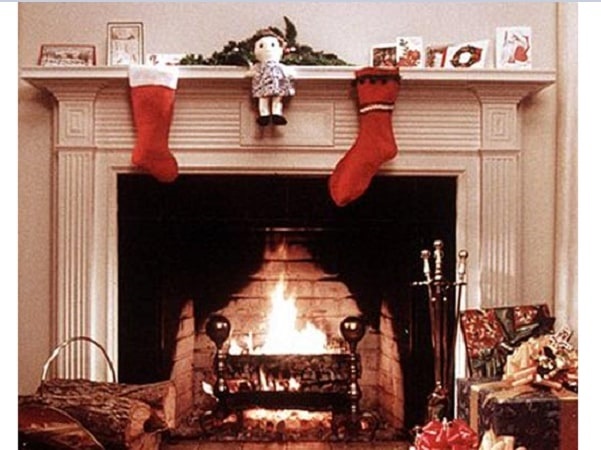Introduction: In this article – the third in a series of four – Jessica Edwards describes some more superstitions our ancestors had about Christmas, focusing on the Yule log. Jessica has had a lifelong interest in her family’s history – especially on her father’s side, which goes back to the first settlers in Pennsylvania, Jamestown and New England – and has documented and added more than 30,400 people to her family tree!
In this series of four articles, I’m describing some Christmas superstitions that may be mentioned by relatives in their diaries and journals – or that family members may still practice today – that have been handed down from their ancestors. Things changed over time and people began to see these beliefs as fallacies. However, some people still follow them either for fun or for tradition’s sake. Do you do any of these practices, or did your ancestors?
Today, let’s look at superstitions and beliefs regarding Yule logs.
The Yule log used to be an entire tree, which was burnt to provide enough warmth for the whole family. Today, small Yule logs are burnt in fireplaces. Also, cakes in the shape of a Yule log have become a seasonal treat.
The type of tree chosen for the Yule log made a difference in various cultures. The Germans were the ones that said a Christmas tree should be something in the evergreen family. In England, the usual Yule log is made from an oak tree. The French prefer a cherry tree. Other types of trees were sought out because of their supposed benefits: Oak has curative qualities and can bring strength and wisdom; Pine symbolizes growth and prosperity; Ash stands for protection, prosperity and goodness of health; Holly is for good sight; Birch suggests a new start; and Willow helps in accomplishing one’s wishes.
During the winter celebrations people used to burn wood and drink wine to celebrate the Winter Solstice festival (celebrated in most North European countries). The burning of a big log was said to keep off evil spirits, and hence, people wished for it to burn for as long as possible. Prayers and carols are still sung while performing this activity and, most of the time, the mothers or young girls of the family get the privilege of igniting the log. It is customary to preserve a small part of the Yule log until next year’s Christmas celebrations.
Other superstitions say that Yule logs should be gifted or grown only (no buying them), or else they won’t bring good luck. If the Yule log burns throughout the 12 days of Christmas it means the family will have a prosperous new year.
If the flames from the burning Yule log display a shadow without a head, the head of the house is presumed to die within the year.
There were even superstitions about the ashes of the Yule log, such as: the family needed to save some ashes to protect the house from natural calamities; if you soaked some of the ashes in water and then drank it, this could provide a cure to illness, for both human beings and animals. Difficulty in lighting a Yule log is considered ominous, and if touched by a barefooted woman, flat-footed man, or a squint-eyed man, it would mean the family wouldn’t prosper. Ashes of the log were put in the wells to keep the water good.
Sometimes people tuck notes of good wishes into the foliage that comes with the Yule log, while in some other traditions, notes of errors or bad choices are put. The burning of these notes in the fire signifies a new beginning, suggesting a fresh start for all.
Specific regional beliefs:
- In the United Kingdom, the Yule log is called “The Mock” and it is dried and kept in the house. At some places, ash twigs are burnt instead of oak. This tradition comes from one legend that says the shepherds burnt huge ash twigs to keep baby Jesus warm.
- The French have a belief that the whole family together cuts the log into smaller pieces to be burnt throughout the Twelve Days of Christmas.
- Holland has a similar belief to the French, except for the part the log is kept under the bed until it is finally lit on the assigned day.
To be continued…
Explore over 330 years of newspapers and historical records in GenealogyBank. Discover your family story! Start a 7-Day Free Trial.
Note on the header image: a burning Yule log. Credit: Joe Malzone; Wikimedia Commons.
Related Articles:
